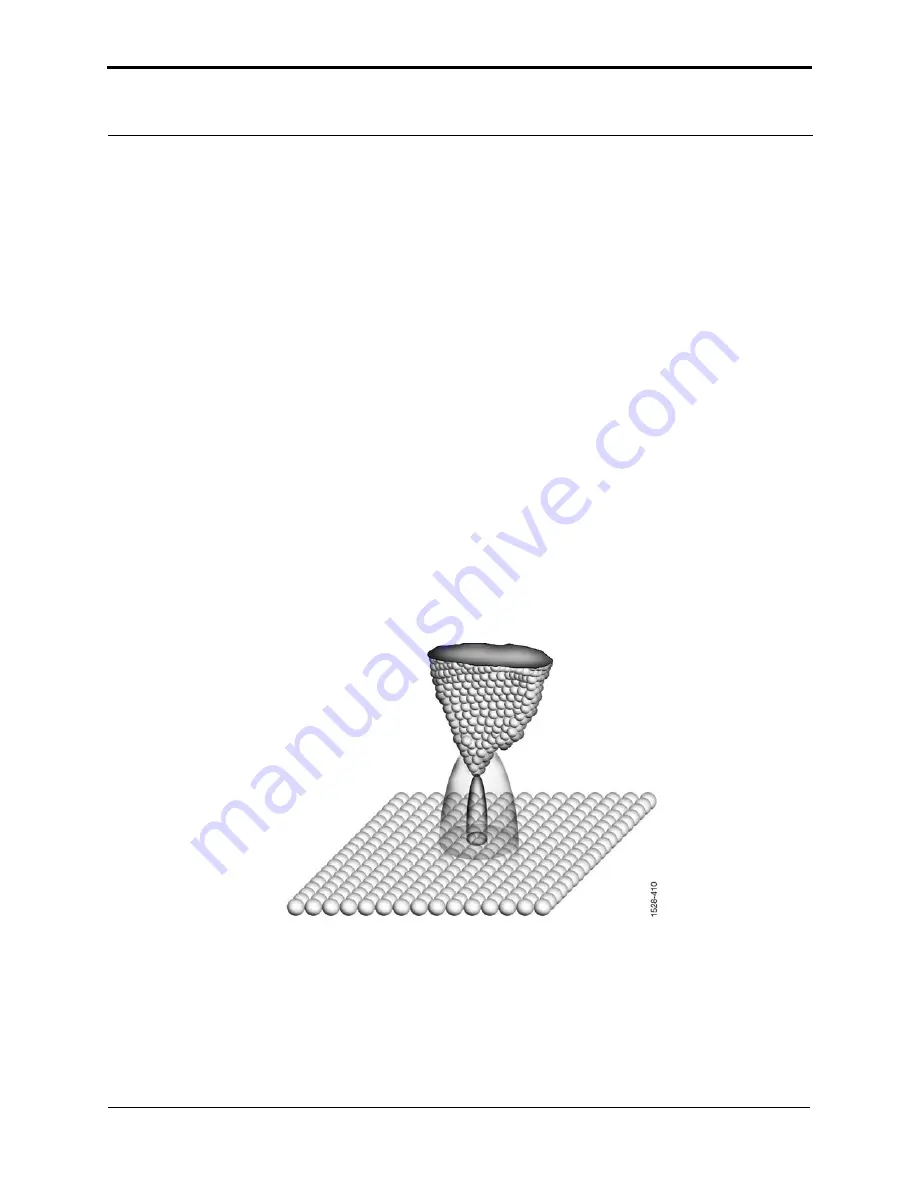
SPM Fundamentals for the MultiMode
Control Mechanisms and Feedback
28
MultiMode SPM Instruction Manual
Rev. B
2.2
Control Mechanisms and Feedback
To produce quality images, the SPM must be capable of controlling the tip-sample interaction with
great precision. This is accomplished with the use of an electronic feedback loop, which safeguards
the tip and sample by keeping forces between them at a user-speci
fi
ed
Setpoint
level. Although
signal processing varies according to the image mode used, the feedback loop performs essentially
the same function.
2.2.1 A brief history of SPM control mechanisms
The
fi
rst SPMs were scanning tunneling microscopes (STMs), which use tunneling current to
monitor tip-sample separation. By monitoring the
fl
ow of electrons from tip to sample (or vice
versa), the tip’s height above the surface can be precisely maintained. The tip-sample separation is
typically maintained at several atomic diameters, or about 10Å. As tip-sample separation decreases
and increases due to feature height, the tunneling current increases and decreases respectively,
obeying an exponential relationship.
A diagram portraying the tunneling effect during STM is shown in
. In this example,
electron activity describes a zone several angstroms wide. Because electrons
fl
ow exponentially
across the gap, depending upon tip-sample separation, dramatic differences in current are shown as
the tip-sample distance is varied slightly. This monitoring mechanism remains the most sensitive
used in SPM, achieving greater resolution than any other method.
Figure 2.2a
Tunneling Phenomenon Between Tip and Sample
STM’s biggest dif
fi
culty is that it requires electrically conductive samples. Soon after its
introduction, a method was sought which would allow non-conducting samples to be imaged.
Efforts lead to the
fi
rst contact AFMs, which continued using tunneling current as the monitoring
mechanism.
portrays an early contact AFM scheme. In this scheme, a contact probe
was scanned over the surface. As the tip encountered features, it moved up and down. Positioned
directly above the surface of the contacting probe’s cantilever was an STM probe. Fluctuations in
current between the STM tip and contact probe were used as the feedback mechanism and to render
Tip
Surface
Tunneling electrons













































